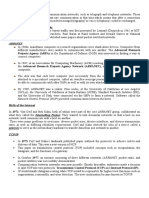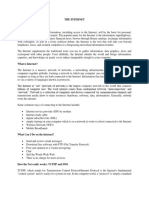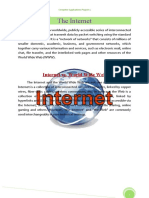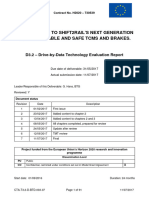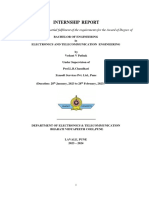CHAPTER SIX
INTERNET
The emergence of Internet replaced the ‘one-to-many’ model of traditional
mass communication with the possibility of the ‘many-to-many’ web of
communication. Internet is also one of the more important tools of interactive
communication in modern society. Internet has also become an important medium of
communication in modern society.
A BRIEF HISTORY OF THE INTERNET
WAN
A wide area network (also known as WAN) is a collection of local-area
networks (LANs) or other networks that communicate with one another. A WAN is
essentially a network of networks, with the Internet the world's largest WAN. WANs
can facilitate communication, the sharing of information and much more between
devices from around the world through a WAN provider.
The first known WAN was created by the U.S. Air Force in the late 1950s to
interconnect sites in the Semi-Automatic Ground Environment (SAGE) radar defense
system. An enormous network of dedicated phone lines, telephones, and modems
linked the sites together. These networks are often established by service providers
that then lease their WAN to businesses, schools, governments or the public. Access
can be granted via different links, such as virtual private networks (VPNs) or lines,
wireless networks, cellular networks or internet access.
ARPANET
The Advanced Research Projects Agency Network (ARPANET) is a predecessor
to the modern Internet. The Advanced Research Projects Agency (ARPA)
commissioned the development of an advanced and reliable way to connect these
computers through a newly devised packet switching network, which was known as
ARPANET, a pioneering network for sharing digital resources among geographically
separated computers.
The ARPANET was a project funded by the U.S. government during the Cold
War, in order to build a robust and reliable communications network. Its initial
demonstration in 1969 led to the Internet, whose world-changing consequences unfold
on a daily basis today. A seminal step in this sequence took place in 1968 when ARPA
contracted BBN Technologies to build the first routers, which one year later enabled
�ARPANET to become operational. The initial groundwork for a computer network was
laid by Joseph C. R. Licklider of Bolt Beranek and Newman (BBN).
What Does Packet Switching Mean?
Packet switching is a digital network transmission process in which data is
broken into suitably sized pieces or blocks for fast and efficient transfer via different
network devices. When a computer attempts to send a file to another computer, the
file is broken into packets so that it can be sent across the network in the most efficient
way. These packets are then routed by network devices to the destination.
MERIT NETWORK
Established in 1966, Merit has been at the forefront of networking technology
throughout its history. Merit’s engineers created ground breaking router technology
and networking protocols to connect the mainframe systems at Michigan State
University, University of Michigan, and Wayne State University. The pioneering
computer network served as the foundation for what is now a statewide network in
Michigan and sparked Merit’s mission of connecting organizations and building
community.
CYCLADES
Cyclades is (was) a packet-switching network developed in 1972 that had many
of the attributes of a modern computer network. Cyclades was developed in France
based on ARPANET after a group of French delegates were introduced to the
technology on a visit to the United States. Cyclades introduced a number of new
concepts that had a major technical influence on the development of the Internet.
Cyclades was the first network to use datagrams and make network hosts
responsible for delivering data, rather than the network itself. This was highly
influential in the development of TCP/IP, which eventually became the language of the
Internet. Cyclades also had a layered architecture, with a data transmission layer,
transport layer and application layer.
TCP/IP
The Defense Advanced Research Projects Office (DARPA), the investigation
department of the U.S. Department of Defense, made the TCP/IP shown in the 1970s
for utilization in ARPANET.
� TCP/IP stands for Transmission Control Protocol/ Internet Protocol. It is a
set of conventions or rules and methods that are used to interconnect network
devices on the Internet. It chooses how the information will be traded over the web
through end-to-end communications that incorporate how the information ought to
be organized into bundles (bundles of data), addressed, sent, and received at the goal.
WORLD WIDE WEB
The development of the World Wide Web was begun in 1989 by Tim Berners-
Lee and his colleagues at CERN, an international scientific organization based in
Geneva, Switzerland. They created a protocol, Hyper Text Transfer Protocol (HTTP),
which standardized communication between servers and clients.
The Web gives users access to a vast array of documents that are connected to
each other by means of hypertext or hypermedia links—i.e., hyperlinks, electronic
connections that link related pieces of information in order to allow a user easy access
to them. Hypertext allows the user to select a word or phrase from text and thereby
access other documents that contain additional information pertaining to that word or
phrase. Hypermedia documents feature links to images, sounds, animations, and
movies.












